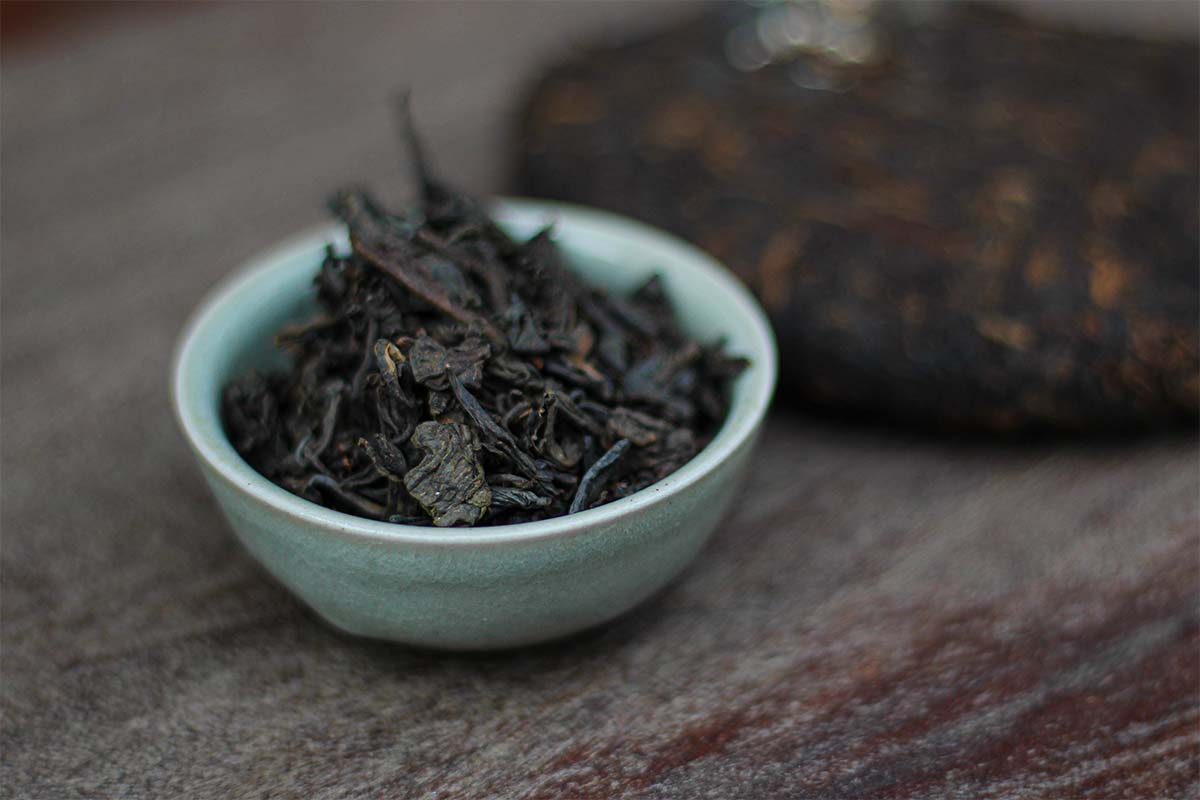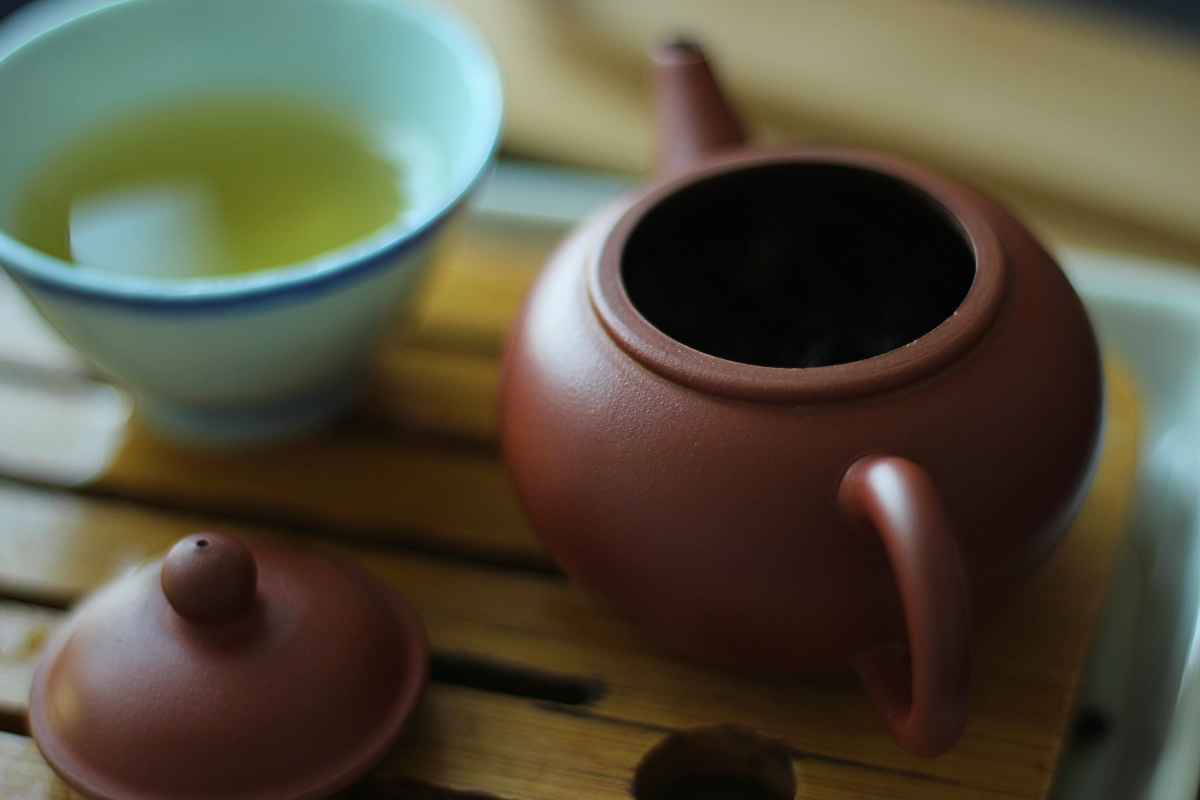At first sight, Liu bao and shou pu-erh tea look and taste very similar. It’s only after closer inspection that we can see and taste some clear differences between these two types of tea. This article offers a complete overview of the differences and similarities between Liu Bao and Pu-erh tea.
Liu Bao and Shou pu-erh tea look similar because they both go through artificial fermentation during production. However, there are some major differences between them because the process of artificial fermentation is not the same. Different raw material is used and that requires its own unique processing methods.
Liu Bao and pu-erh tea
Liu Bao and pu-erh tea are sometimes compared to one another because they appear to be similar. An important sidenote to make here is that it is only shou pu-erh that is often compared to Liu Bao. Sheng pu-erh can be enjoyed young or aged, but either of these is quite different from your average cup of Liu Bao.

Don’t know where to buy tea online? I made a list of over 300 online tea shops and I keep updating it regularly. You can check it over here
Shou pu-erh tea is much more famous than Liu Bao, but hasn’t been around for that long. Liu Bao tea has an extensive history as the production process dates back more than 1500 years.
Cangwu County in Guangxi province is the home to Liu Bao, While all pu-erh tea (both sheng and shou) comes from Yunnan province. It’s remarkable that the most recent tea overshadows its much older brother from Guangxi and that Liu Bao is an often overlooked subtype of tea, especially in the west.
Similarities between Liu Bao and shou pu-erh
One can immediately see the similarities between these two teas. This is because of artificial fermentation.
Artificial fermentation
Both Liu Bao and shou pu-erh are classified as dark tea (hēi chá or 黑茶) because these are fermented teas. The production process is very similar as they both go through artificial fermentation. They both go through artificial fermentation, but there are big differences in the way of fermenting the leaves.
Pu-erh tea hasn’t always been a fermented tea as sheng pu-erh is basically unfermented right after production. It slowly ferments over time and reaches full maturity after 70 years. Shou pu-erh was first created in the early 1970s and was fermented during production. The first official sale of shou pu-erh took place in 1973 and since then, there are two varieties of pu-erh tea.
The fermentation process of Liu Bao served as inspiration to create shou pu-erh tea. Tea producers from Guangxi helped developing a way to ferment the big tea leaves from Yunnan province. This resulted in the creation of shou pu-erh.
The artificial fermentation process of Liu Bao and shou pu-erh is called wo dui (wò dūi or 渥堆 in Chinese) and translates as wet-piling. Tea leaves are piled in a hot and humid room and the piles are turned on a regular basis. Water is used to spray the leaves in an attempt to improve fermentation and thermal blankets are also used in some cases.
Differences between Liu Bao and shou pu-erh
There are similarities between Liu Bao and shou pu-erh, but there are also differences. When you take a closer look, these teas are a lot more different than you might think.
Different piling process
The first difference between Liu Bao and shou pu-erh is the artificial fermentation itself. They both go through artificial fermentation, but it’s not the exact same process.
Liu Bao has a richer and longer history than shou pu-erh and that knowledge was used to develop and improve the fermentation process of shou pu-erh. The techniques to artificially ferment tea leaves for Liu Bao is one of the reasons shou pu-erh is what it is today. They did not just copy the whole process but changed and tweaked a few details to make it more suitable for the raw material from Yunnan.
This influence also works the other way as the production of shou pu-erh affected the way Liu Bao was produced from the 1980s onwards. Since then, the fermentation of Liu Bao was wetter and longer so there was heavier fermentation of the leaves.
Different raw material
Another big difference is the raw material that is used to create pu-erh tea and Liu Bao. All pu-erh tea comes from large leaf varieties of the Camellia Sinensis plant in Yunnan province (or some border regions). All Liu Bao comes from Guangxi province and is made using a slightly smaller leaf variety.
The leaves are different, but the (micro)climate in which they are grown is different as well. It’s comparable to Champagne, which comes from a specific region in France. Some people have tried to make Champagne somewhere else, but it doesn’t work because the climate, microorganisms, and plants all affect each other to create a unique environment that can’t be replicated elsewhere.
This is why the artificial fermentation process is different. The unique character of each tea requires its own unique processing.
Popularity of Liu Bao and pu-erh
During the tin mine boom (19th-20th century) in Malaysia (then under British control), many Chinese immigrant workers went to work in the tin mines. In order to survive the harsh and difficult working conditions, the workers drank a lot of Liu Bao tea. It was mainly drunk for its medicinal properties and not because it tasted good.
Massive amounts of Liu Bao was exported from China to Malaysia in order to keep the workers satisfied. However, from the 1980s onwards, tin prices dropped and mining activity decreased. This led to an oversupply of Liu Bao because there were fewer workers who drank Liu Bao.
The creation of shou pu-erh in the 1970s and the rise in popularity of sheng pu-erh made pu-erh tea far more popular than Liu Bao. The latter was even a bit forgotten until the 1990s when it was rediscovered. People noticed that it didn’t go bad, but that it had improved with age.
Since the 1970s and 1980s, pu-erh tea has become increasingly popular with a peak in 2008. Liu Bao has also become more popular again since the late 1990s, but still has a long way to go to reach the same levels of popularity as shou pu-erh.




